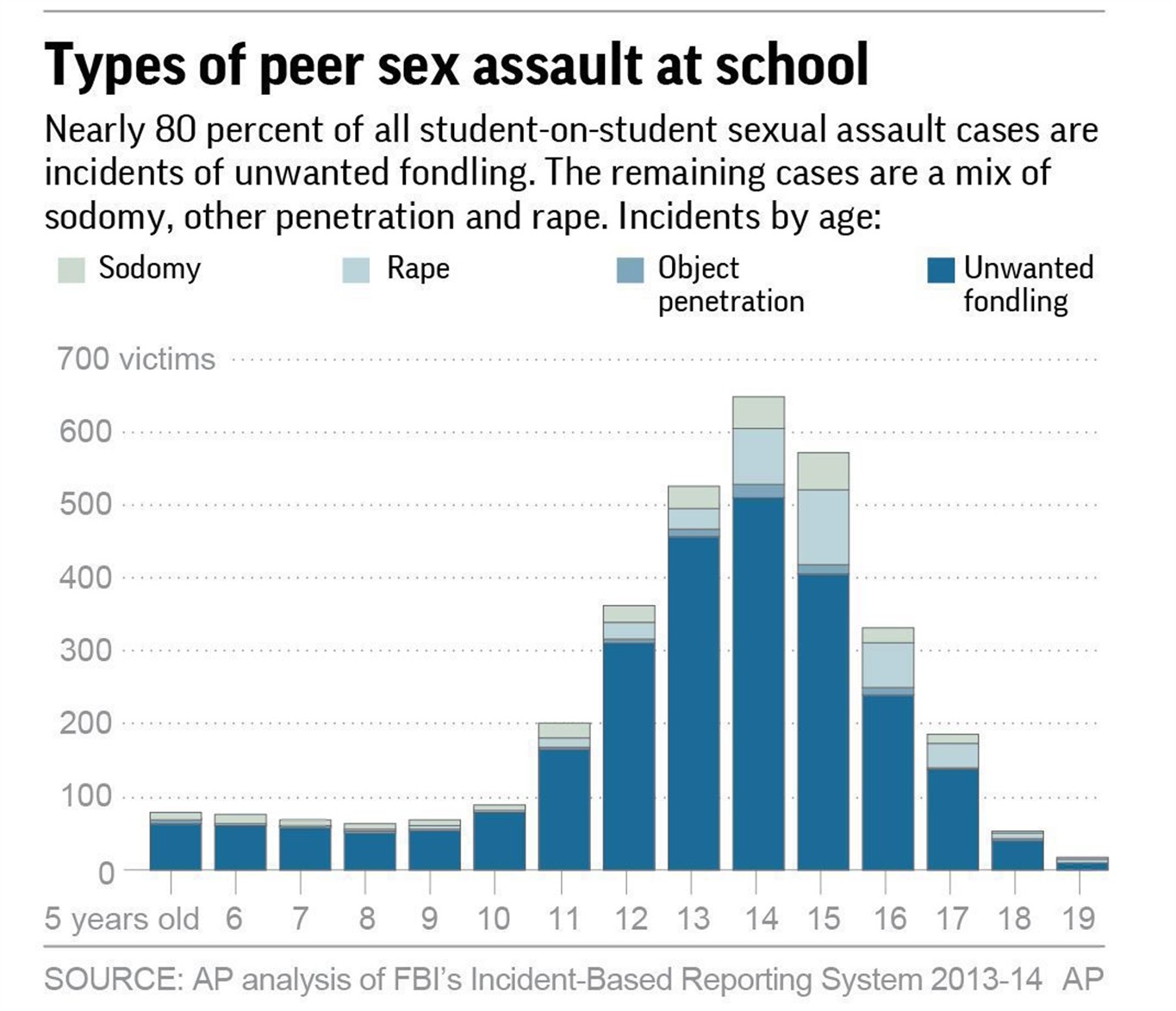BURNSWICK, Maine – A recent Associated Press investigation is revealing that students sexually assaulting other students at school is a serious problem that’s often overlooked or not properly investigated by school officials.
“Relying on state education records, supplemental federal crime data, a yearlong investigation by The Associated Press uncovered roughly 17,000 official reports of sex assaults by students over a four-year period, from fall 2011 to spring 2015,” according to the news service.

MORE NEWS: Know These Before Moving From Cyprus To The UK
“Though that figure represents the most complete tally yet of sexual assaults among the nation’s 50 million K-12 students, it does not fully capture the problem because such attacks are greatly under-reported, some states don’t track them and those that do vary widely in how they classify and catalog sexual violence. A number of academic estimates range sharply higher.”
The AP reports there is currently no requirement for elementary or secondary schools to track or report sexual violence, and many actively work to cover up such events to avoid the consequences of public ridicule and legal liabilities.
“Schools are required to keep students safe,” Charol Shakeshaft, a Virginia Commonwealth University professor and expert in school sexual misconduct, told the AP. “It is part of their mission. It is part of their legal responsibility. It isn’t happening Why don’t we know more about it, and why isn’t it being stopped?”
Data reviewed by the news service shows children are most often sexually assaulted by other children in private residences, but schools are the second most common place for attacks.
And often, those school attacks are mischaracterized as bullying, hazing or consensual behavior.
“It occurred anywhere students were left unsupervised: buses and bathrooms, hallways and locker rooms,” the AP reports. “No type of school was immune, whether it be in an upper-class suburb, an inner-city neighborhood or a blue-collar farm town.”
MORE NEWS: How to prepare for face-to-face classes
The majority of student-on-student sex assaults involve victims between the ages of 11 and 17, though about 5 percent of the cases involved 5- and 6-year-olds. The number of student victims increases from ages 11 through 14, then decline through high school.
The most common form of assault is unwanted fondling, followed by rape, sodomy and object penetration.
“Contrary to public perception, data showed that student sexual assaults by peers were far more common than those by teachers. For every adult-on-child sexual attack reported on school property, there were seven assaults by students, AP’s analysis of the federal crime data showed,” according to the news service.
And many of the student sex assaults are kept quiet by school officials out of fear of legal liabilities and public backlash. Often school officials use student privacy policies or other excuses to withhold information from the public.
“No principal wants their school to be the rape school, to be listed in the newspaper as being investigated. Schools try to bury it. It’s the courageous principal that does the right thing,” said Bill Howe, a former teacher who oversaw Connecticut’s compliance with Title IX – federal laws aimed at protecting sex assault victims in schools.
“Everyone feels like we don’t have a problem, and the reason they feel that way is they have their heads in the sand,” said Wilson Kenney, an Oregon psychologist who develops intervention programs.
Unlike school shooters who leave an obvious wake of destruction, student sexual assaults are not in the limelight because of school officials who downplay the incidents and student victims who are reluctant to report the intimate attacks, Kenney said.
“There’s no Sandy Hook for sexual misconduct,” he said. “But I think the potential harm is great.”


Join the Discussion
Comments are currently closed.